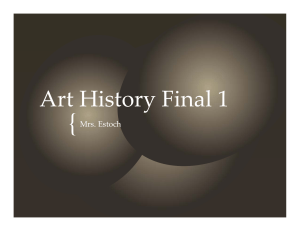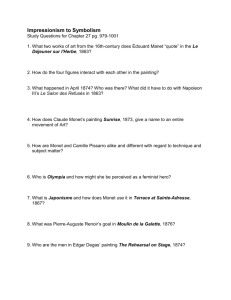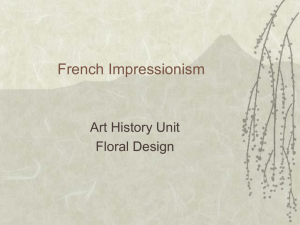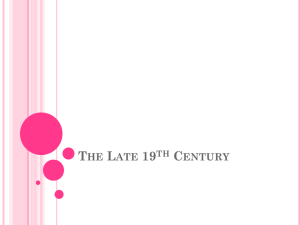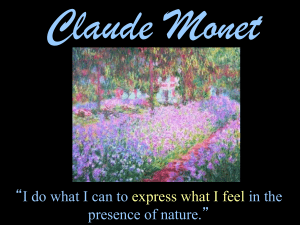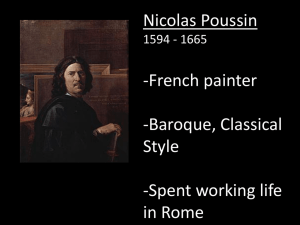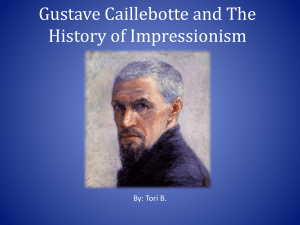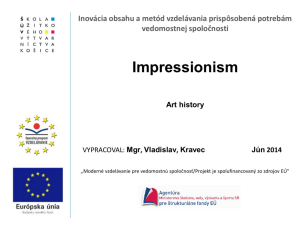Claude Monet - joshcomputer art.weebly.com
advertisement
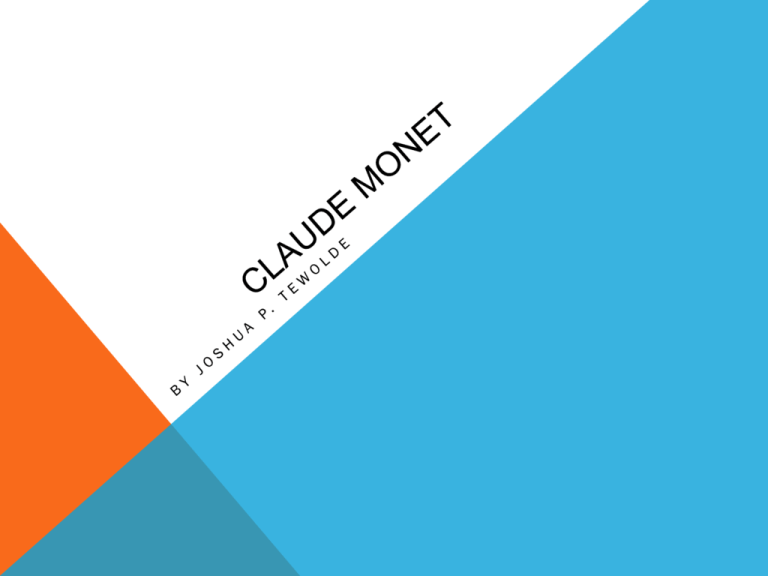
Oscar-Claude Monet (/moʊˈneɪ/; French: [klod mɔnɛ]; 14 November 1840 – 5 December 1926) was a founder of French Impressionist painting, and the most consistent and prolific practitioner of the movement's philosophy of expressing one's perceptions before nature, especially as applied to plein-air landscape painting.[1][2] The term "Impressionism" is derived from the title of his painting Impression, soleil levant (Impression, Sunrise), which was exhibited in 1874 in the first of the independent exhibitions mounted by Monet and his associates as an alternative to the Salon de Paris. MONET'S AMBITION OF DOCUMENTING THE FRENCH COUNTRYSIDE LED HIM TO ADOPT A METHOD OF PAINTING THE SAME SCENE MANY TIMES IN ORDER TO CAPTURE THE CHANGING OF LIGHT AND THE PASSING OF THE SEASONS. FROM 1883 MONET LIVED IN GIVERNY, WHERE HE PURCHASED A HOUSE AND PROPERTY, AND BEGAN A VAST LANDSCAPING PROJECT WHICH INCLUDED LILY PONDS THAT WOULD BECOME THE SUBJECTS OF HIS BEST-KNOWN WORKS. IN 1899 HE BEGAN PAINTING THE WATER LILIES, FIRST IN VERTICAL VIEWS WITH A JAPANESE BRIDGE AS A CENTRAL FEATURE, AND LATER IN THE SERIES OF LARGE -SCALE PAINTINGS THAT WAS TO OCCUPY HIM CONTINUOUSLY FOR THE NEXT 20 YEARS OF HIS LIFE. IMPRESSION, SUNRISE MONET AND IMPRESSIONISM First "Impressionist" exhibition From the late 1860s, Monet and other likeminded artists met with rejection from the conservative Académie des Beaux-Arts which held its annual exhibition at the Salon de Paris. During the latter part of 1873, Monet, Pierre-Auguste Renoir, Camille Pissarro, and Alfred Sisley organized the Société anonyme des artistes peintres, sculpteurs et graveurs (Cooperative and Anonymous Association of Painters, Sculptors, and Engravers) to exhibit their artworks independently. At their first exhibition, held in April 1874, Monet exhibited the work that was to give the group its lasting name. Impression, Sunrise was painted in 1872, depicting a Le Havre port landscape. From the painting's title the art critic Louis Leroy, in his review, "L'Exposition des Impressionnistes," which appeared in Le Charivari, coined the term "Impressionism".[3] It was intended as disparagement but the Impressionists appropriated the term for themselves. BIOGRAPHY FRANCO-PRUSSIAN WAR AND ARGENTEUIL After the outbreak of the Franco-Prussian War (19 July 1870), Monet and his family took refuge in England in September 1870,[16] where he studied the works of John Constable and Joseph Mallord William Turner, both of whose landscapes would serve to inspire Monet's innovations in the study of color. In the spring of 1871, Monet's works were refused authorisation for inclusion in the Royal Academy exhibition.[15] In May 1871, he left London to live in Zaandam, in the Netherlands,[15] where he made twenty-five paintings (and the police suspected him of revolutionary activities).[17] He also paid a first visit to nearby Amsterdam. In October or The first Impressionist exhibition held in 1874 at boulevard desFrom Capucines, Paris, November 1871, hewas returned to35France. December from 15 April to 15 May. The primary purpose of the participants was not so 1871 tomuch 1878 healived a village onofthe to promote new style,at butArgenteuil, to free themselves from the constraints the right Paris. The exhibition, open to anyone prepared to pay 60 francs, gave bank of Salon thedethe Seine river near Paris, a popular Sundayartists opportunity to show their work without and the interference of a jury.[20][21][22] outing destination for Parisians, where he painted some of his best-known works. In 1873, Monet purchased a small boat tocommittee be used asmosta offloating studio.[18] From Renoirequipped chaired the hanging and did the work himself, as others failed to present themselves.[20][21] the boatmembers studio Monet painted landscapes and also portraits of Édouard Manet and his wife; Manet in turn depicted Monet painting aboard the boat, accompanied by In addition to Impression: Sunrise (pictured above) Monet presented four oil paintings and pastels. Among the In paintings he displayed was The Luncheon (1868), to Camille,seven in 1874.[18] 1874, he briefly returned features Camille Doncieux and Jean Monet, and which had been rejected Holland.which by the Paris Salon of 1870.[23] Also in this exhibition was a painting titled Boulevard des Capucines, a painting of the boulevard done from the photographer Nadar's apartment at no. 35. Monet painted the subject twice, and it is uncertain which of the two pictures, that now in the Pushkin Museum in Moscow, or that in the Nelson-Atkins Museum of Art in Kansas City, was the painting that appeared in the groundbreaking 1874 exhibition, though more recently the Moscow picture has been favoured.[24][25][26] Altogether, 165 works were exhibited in the exhibition, including 4 oils, 2 pastels and 3 watercolors by Morisot; 6 oils and 1 pastel by Renoir; 10 works by Degas; 5 by Pissarro; 3 by Cézanne; and 3 by Guillaumin. Several works were on loan, including Cézanne's Modern Olympia, Morisot's Hide and Seek (owned by Manet) and 2 landscapes by Sisley that had been purchased by DurandRuel.[20][21][22] IMPRESSIONISM
